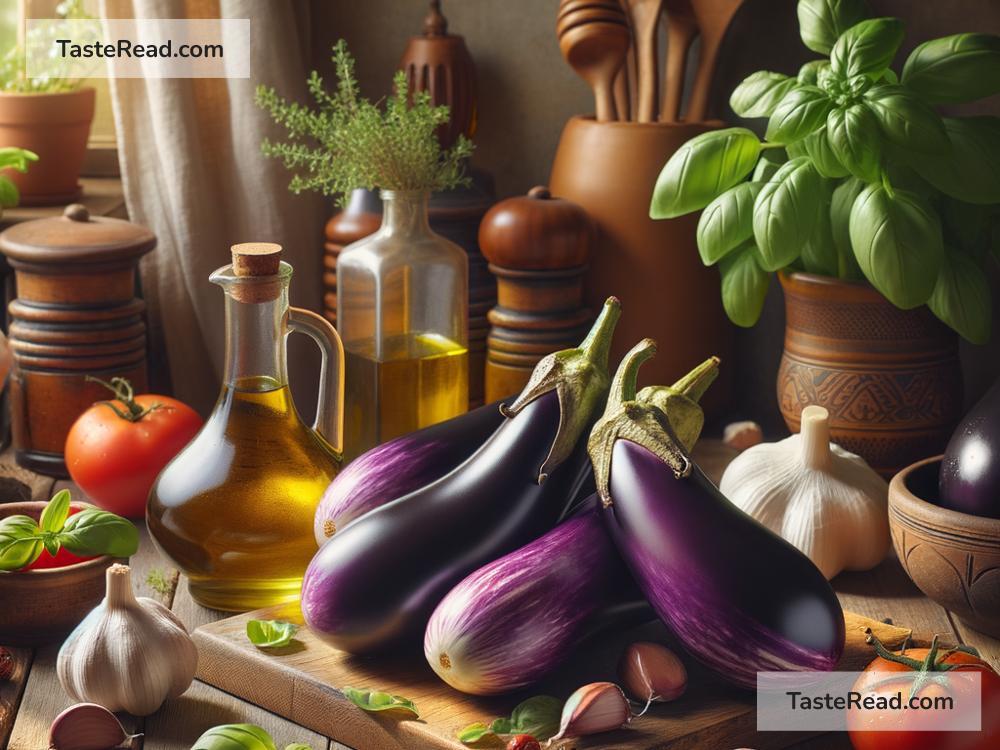How Eggplants Became a Symbol of Mediterranean Cuisine
When most people think of Mediterranean cuisine, dishes like hummus, falafel, olive oil, feta cheese, and fresh vegetables often come to mind. But one ingredient stands out among the rest: the humble eggplant. This purple vegetable has become an essential part of Mediterranean cooking, used in famous dishes like baba ganoush, moussaka, and ratatouille. However, eggplants weren’t always so popular. Their journey into Mediterranean kitchens and their rise to fame is a story of culture, trade, and culinary creativity.
What Are Eggplants?
Before diving into their history, let’s start with the basics. Eggplants are technically a fruit, but they’re mainly treated as a vegetable in cooking. They have a smooth, purple skin and a spongy, mild-flavored flesh. Eggplants come in many shapes and colors—from long and slim to round and fat, and shades that include white, green, and even striped varieties.
Eggplants belong to the nightshade family, which also includes tomatoes, potatoes, and peppers. While they thrive in warm climates, they’re now grown around the world.
Where Eggplants Came From
Eggplants have ancient origins, but they didn’t come from Europe or the Mediterranean. Historians believe they were first domesticated in India over 2,000 years ago. From India, eggplants spread to China, where they became part of traditional dishes. In fact, ancient Chinese texts mention eggplants as early as 500 B.C.
Eggplants eventually made their way westward, thanks to trade routes and cultural exchanges. The Arabs played a key role in introducing eggplants to the Mediterranean. During the Islamic Golden Age (around the 7th to 13th centuries), Arab traders brought crops like eggplants, rice, and spices across regions from India to North Africa and Spain.
Early European Views of Eggplants
When eggplants arrived in Europe, not everyone was excited about them. In fact, Europeans were initially skeptical of this strange purple fruit. Early eggplants were often bitter, and they had a reputation for causing illness or madness. Some even nicknamed them “mad apples.”
It wasn’t until farmers began breeding sweeter and less bitter varieties that eggplants gained wider acceptance. They started appearing in Mediterranean kitchens, where cooks discovered how versatile they could be. Eggplants absorbed flavors beautifully, making them a perfect ingredient in dishes seasoned with garlic, olive oil, herbs, or spices.
Eggplants in Mediterranean Cuisine
Eggplants truly blossomed in Mediterranean cuisine because of the region’s love for fresh, flavorful, and seasonal ingredients. Over the years, different Mediterranean countries developed their own eggplant-based dishes, turning this vegetable into a local favorite.
Greece: Moussaka
One of the most famous Mediterranean dishes featuring eggplant comes from Greece – moussaka. This hearty dish consists of layers of eggplant, ground meat (often lamb or beef), tomatoes, and a creamy béchamel sauce. Moussaka is baked to golden perfection and is a classic comfort food for Greeks and visitors alike.
Turkey: Imam Bayıldı
In Turkey, eggplants are the star of a dish called imam bayıldı, which translates to “the imam fainted.” This dish features eggplants stuffed with onions, garlic, and tomatoes and cooked in olive oil until tender. The name comes from the legend that an imam fainted when he tasted how delicious it was—or when he saw the amount of expensive olive oil used!
Middle East: Baba Ganoush
In the Middle East, eggplants are often mashed into spreads like baba ganoush. This smoky, creamy dip is made by roasting eggplants and mixing them with tahini, lemon juice, garlic, and olive oil. It’s served as a meze (appetizer) with flatbread, giving it a special place at the heart of Middle Eastern meals.
Italy: Eggplant Parmesan
Italy has its own eggplant star: eggplant parmesan (melanzane alla parmigiana). This dish features slices of breaded and fried eggplants layered with tomato sauce, mozzarella, and parmesan cheese. It’s baked until bubbly and is a celebrated comfort food in Italian kitchens.
France: Ratatouille
In France, eggplants are often included in ratatouille, a vegetable stew made with zucchini, peppers, onions, tomatoes, and herbs. This rustic dish showcases the simplicity and freshness of Mediterranean cooking.
Why Eggplants Became a Symbol of Mediterranean Cuisine
Several factors contributed to eggplants’ symbolic role in Mediterranean cuisine:
-
Adaptability: They grew well in the warm Mediterranean climate. Countries across the region could cultivate them and include them in cooking year-round.
-
Cultural Exchange: Trade and migration helped spread recipes and cooking techniques. The use of eggplants mirrored the connection between diverse Mediterranean cultures.
-
Flavor Versatility: Eggplants absorb flavors from other ingredients, making them ideal for the Mediterranean’s spice and herb-heavy cooking style.
-
Celebration of Vegetables: Mediterranean cuisine often emphasizes fresh, plant-based ingredients, and eggplants fit right in as a centerpiece.
Conclusion
Today, eggplants are beloved across the Mediterranean and beyond. They’ve transformed from an exotic and misunderstood fruit to a staple of celebrated dishes around the world. Whether roasted, fried, mashed, or baked, eggplants continue to symbolize the creativity, warmth, and cultural diversity of Mediterranean cuisine. So the next time you enjoy an eggplant dish, remember the long journey this versatile vegetable took to become a culinary icon!


